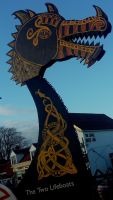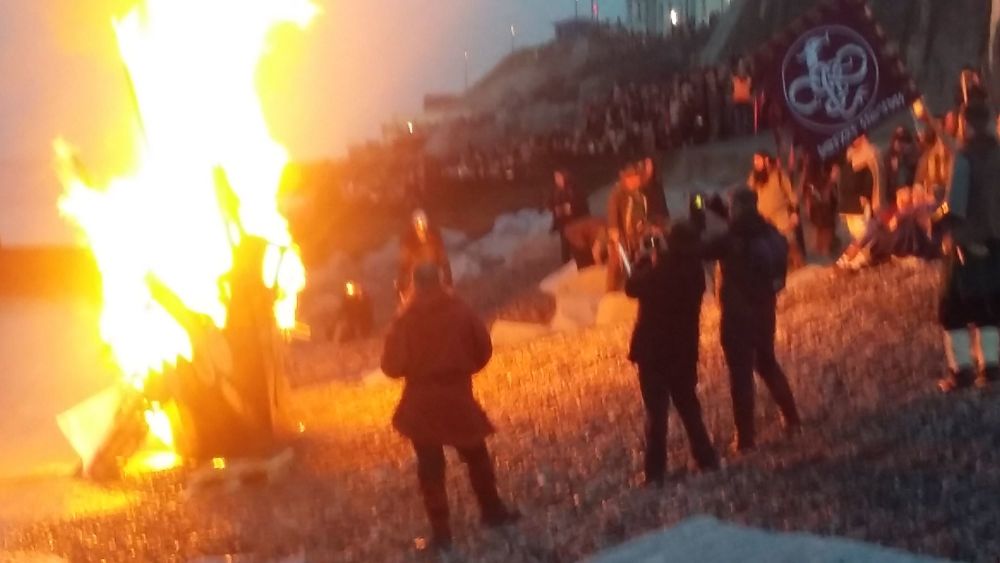Beowulf in Norfolk
Posted on

‘The warriors began to rouse on the barrow the greatest of funeral-fires; the wood-reek mounted up dark above the smoking glow, the crackling flame, mingled with the cry of weeping – the tumult of the winds ceased – until it had consumed the body, hot to the heart.’
So Beowulf, dragon-slayer, monster-killer, wrestler with underwater beasts – is sent on his way. And so, on the beach of Sheringham, in Norfolk, a local was dispatched, his ashes contained in the replica Viking longboat they were incinerating. If you want to visualise the final moments of Beowulf, go to a Viking festival. Sheringham’s the big one in East Anglia, and I drove there one day to join the crowd along the sea-wall. They were hundreds strong, fleeces zipped and mufflers tight, children waving plastic swords, boys in double-horned helmets, girls wearing wigs of braided plaits.
Down on the foreshore, costumed performers from a historical re-enactment society acted out a battle between ninth century Anglo-Saxons and Nordic invaders, war-horns blaring like Roland’s oliphant. The sun gleamed on long-nosed helmets, shield-bosses and mail-shirts, conjuring ingots from the fibulae on their woollen capes. Wooden swords pounded against shields; axes swung against chainmailed backs. As the performers rose from sand-splattered, temporary deaths, a shield-maiden pronged the air with a feathered staff.
‘The Valkyries have done their work,’ she called out, broadcasting to the crowd with the aid of a microphone, ‘the fallen are back from Valhalla!’
Later, under a mauve-clouded sky, swales of crowd shaded the murals of mammoths and cold-cast portraits of old Norfolk fishermen. Costumed Anglo-Saxons bore the dragon-prowed boat down to the beach, setting it on a slope of shingle. Wooden pallets were stacked inside as kindling, along with a mannequin warrior and the ashes of the recently deceased.
‘We are all one!’ called the warriors. ‘We send him out with the smoke to Valhalla!’
Flames crackled under the sparks, which glowed in a smoky funnel as dark as gunmetal. The dragon-headed prow stood firm, claw-nosed, with sawtooth jaws and braided jewellery painted down its neck. The rest of the boat melted quickly, leaking fragments of burning wood into the tide. Gusts whipped the funnel of smoke, sweeping it towards the groyne where a few of us were leaning. Ash floated in the air like fragments of silk, and a drone camera glided overhead for the best pictures.
In Beowulf, there’s a powerful moment in the epic’s climax. As Beowulf is burning, a woman ‘with hair bound up,’ sings a dirge, ‘of her worst fears, a wild litany of nightmare and lament’. Seamus Heaney compared this moment to late 20th century news reports, ‘from Rwanda or Kosovo’, so powerfully photographic is the image. It’s a reminder that Beowulf describes the world we’re still living in, and as alien and strange as the poem’s content often appears, much of it connects with the world of today. Watching the cremation at Sheringham, I felt that shiver of connection.
Add a comment: